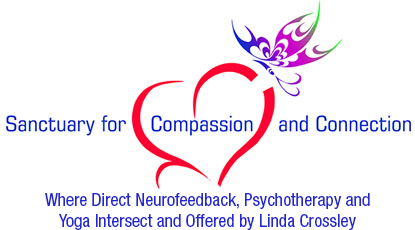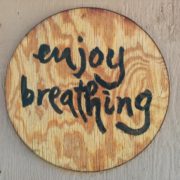Heart Rate Variability, Stress Reactivity, and Diaphragmatic Breathing – How Yoga’s Basic 3-part Breath Practice Supports Body-Mind Health
One of the designations for the month of May is National Physical Fitness and Sports Month with the social media message of #MoveInMay. So in support of this awareness effort, I would like to share the benefits of learning how to move your diaphragm to support your body-mind fitness! Yes, that large skeletal muscle that divides our chest cavity from our abdominal cavity. Did you know that the diaphragm is the primary muscle responsible for our ability to breath?
When I attended my first yoga class, I struggled with the instruction to allow my belly to expand on the inhale and to pull my belly button in on the exhale. This was due to several societal messages that informed me that I needed to hold my belly in to look thinner and to hold in my powerful emotions as it was not acceptable (or safe) to reveal such feelings openly. I had become what is referred to as a “reverse breather” where I held my belly in on the inhale and let it soften on the exhale. Reverse breathing keeps the diaphragm from participating in the natural breath process, slowly starving the body of the oxygen it needs to function optimally.
When we get stressed navigating overwhelming situations, our bodies naturally react by pulling and holding the belly in, while our minds support the stuffing of our emotions down deep in the well of the body. So for most of us who have suffered some adverse childhood event or events that traumatized our bodies and minds, allowing our breath to release the tight grip in our bellies is scary! So reconnecting to this powerful muscle might be a slow process for many and yet, the research is showing that the effort is well worth the reward of improving our overall body-mind-spirit health.
A new measure of our health status, known as heart rate variability (HRV), is being researched as a marker for overall body-mind health identified through imbalances in our autonomic nervous system (ANS), between the sympathetic (flight/fight) and parasympathetic (rest/digest) branches, as reflected by the variation in time between heart beats. When the variability is low, your overall health is reduced and we experience life as more stressful. When there is greater variability, your overall health is increased and your ability to navigate stress is improved. We may not have any conscious control over our ANS and the beat of our hearts; however, this does not mean that we have no way to impact our HRV to improve our overall health and well-being.
Recent research out of the University of Pennsylvania showed that learning to re-engage our diaphragm in our breath process has a direct, positive impact on HRV. The research studied indices of physiological stress reactivity in varsity athletes before and after introducing a task that created cognitive stress. Slow diaphragmatic breathing was shown to significantly increase HRV, while also reflecting a trend toward greater relaxation. So if we are not able to eliminate stress in our lives, we now know we can simply look to one of our most basic processes of life – respiration – for relief. And with that inner resource to relieve the external stressors of life, we can improve our health – body, mind, and spirit!
If you would like to read more about this research, click on the button below:











